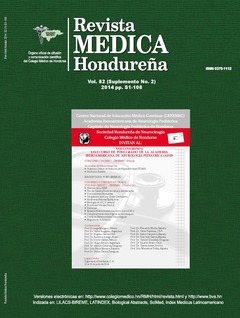Dystonia treatment in children and adolescents
Keywords:
Baclofen, Botulinum toxins, Type A, Deep brain stimulation, Dystonia, TrihexyphenidylAbstract
Introduction. Dystonia is treated with physical (TF) and occupational therapies (OT), psychotherapy (PCT), medications, botulinum toxin A (BTA) and deep brain stimulation (DBS). The objective of this study was to determine the benefits and risk of these treatments. Material and Methods. Inclusion criteria: 6-21 years old, isolated and combined dystonia, never treated, Movement Disorders Clinic, 7/1/2000 - 6/30/2010, treated only with PT, OT 3/week and PCT 1/month for 3 months (group 1) and thereafter during the entire study duration first with L-dopa (group 2), then trihexyphenidyl (group 3), then baclophen (group 4), then TBA times 1 (group 5), then DBS (group 6) and L-Dopa, trihephenidyl and baclophen for 3 months (group 7). Efficacy: dystonia (absent, present but tolerable, unchanged or worse) with Barry-Albright Scale, minimum follow-up 18 months, Age of onset, sex, race, ethnic group, duration of symptoms, distribution were obtained. Parents and children consent were obtained. Results. Group 1: 14/14, 14 unchanged. Group 2: 5/14, 5 absent for mean of 4.8 years. Group 3: 9/9, 2 persistent but tolerable for a mean of 4 years. Group 4: 7/7, 7 unchanged. Group 5: 7/7, 1 present but tolerable for up to 3 years. Group 6: 6/6, 1 absent up to 3 years after DBS. Group 7: 5/5, 5 worse from 18-28 (average 22) months. Discussion. We recommend starting on L-dopa, PT, OT and PCT for 3 months because it is very efficacious and safe. Those unresponsive to L-dopa most be treated for 3 months with trihexyphenidyl, PT, OT and PCT for 3 months. Those unresponsive must be treated with BTA and if positive, to continue every 3 months. Those unresponsive to above treatments must be evaluated for DBS as soon as possible.
Downloads
179




